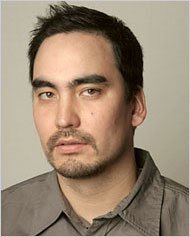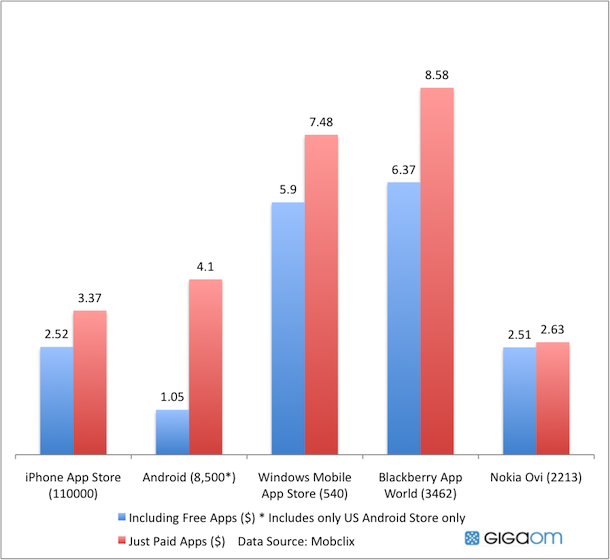
Tim Wu: Not Looking Happy about Being So Wrong
Three years ago this month, Columbia University Law School professor Tim Wu released a controversial white paper in conjunction with the New America Foundation entitled, “Wireless Net Neutrality: Cellular Carterfone and Consumer Choice in Mobile Broadband.” It contained a litany of accusations regarding supposed corporate shenanigans in the mobile marketplace, including: intentional crippling of features and functionality; refusal to allow 3rd party attachments or intentional curtailment of a market for 3rd party application developers; and various concerns about “discrimination” of one sort or another.
Here at the TLF, we responded quite forcefully. I think every one of us piled on this study in one way or another. (ex: Hance, Jerry, James, Tim Lee, me x 2, + a podcast). I called his proposal “a declaration of surrender” since Prof. Wu was essential calling the game early and raising the white flag on mobile competition. Further, I argued he was essentially asking for “the forced commoditization of cellular networks” which “would necessitate at return to the rate-of-return regulatory methods of the past.” Others were a bit more kind to him, but we were all pretty skeptical of his gloomy claims. However, each of us here also argued that the wireless market (especially the applications side of the market) was still developing and that we’d have to check back in a few years to see how well the hands-off approach worked out.
Well, thankfully, we now know for certain that Tim Wu’s was much too lugubrious in his outlook and far too quick to call for regulatory intervention to solve a non-crisis. On the occasion of the 3rd anniversary of the release of Prof. Wu’s paper, CTIA-The Wireless Association filed a short paper with the FCC taking stock of just how far the mobile marketplace has come in just three short years. The results are really quite remarkable, as CTIA’s letter notes:
Contrary to the professor’s view of how the ecosystem would evolve, in the absence of regulation, every element of the wireless ecosystem has expanded. Today, the fact that there are over six hundred devices in the U.S. offering hundreds of different capabilities for consumers, over 170,000 applications, more open networks with open developer initiatives and software development kits, the sale of phones through numerous online and retail outlets, multiple operating systems, and the launch of the newest and most innovative handsets first in the United States demonstrates that the mobile wireless ecosystem continues to evolve to serve customers, contrary to Professor Wu’s arguments.
The filing goes on to examine each of the complaints Prof. Wu had articulated and then discusses current marketplace realities. Here’s the summary:
• Professor Wu asserted that carriers had a “near lock” on the retailing of mobile devices that, presumably, would only be altered through regulatory intervention. Today, consumers can purchase handsets from carriers, directly from manufacturers, through brick-and-mortar retail chains, via Internet discounters, and through a healthy secondary market. For example, Best Buy, Target, Wal-Mart, TigerDirect.com, Amazon.com, LetsTalk.com, Apple, Nokia, Google, Motorola and many others all sell handsets directly to consumers. The recent Best Buy catalog alone lists over a hundred wireless devices for sale.
• Professor Wu argued that the U.S. market had only “a small fraction of the phones available [elsewhere],” implying that carriers restricted the diversity of handsets. Today, the U.S. market has over 630 devices manufactured by 33 different companies, including the BlackBerry® Tour 9630, Samsung Omnia, HTC TouchPro, Motorola Droid, Apple iPhone 3GS, Motorola Karma QA1, BlackBerry® Bold, Motorola Cliq, myTouch 3G, G1, BlackBerry® Pearl Flip, HTC Touch Pro2, Palm Pre, HTC Hero, Samsung Instinct S30, Cricket TXTM8, Motorola Evoke QA4, Samsung JetSet, Motorola Hint, Samsung Finesse, Samsung Messager, LG Tritan, Samsung TwoStep, and the LG Rhythm. Of note, almost every one of the phones listed above was first launched in the United States.
• Professor Wu painted a picture of a “stalled” application market where developers were unable to create applications for mobile devices. Today, a vibrant “apps” market exists where over 170,000 applications are available for popular operating systems, and where developers as young as age 9 can navigate the approval process to become highly successful. At least seven different companies, none of whom are affiliated with wireless carriers, market the overwhelming majority of these applications.
• Professor Wu criticized carriers’ control over handset design. Today, all major carriers, and most of the other carriers in the country, have extensive open network development platforms for devices and software. Intra-industry groups have developed the Open Handset Alliance (which has created the Android operating system), and several other operating systems have moved to an open platform. Additionally, as discussed above, numerous handset manufacturers are selling directly to consumers.
• Professor Wu stated that the “oligopoly” in handset sales resulted in a market where consumer-friendly capabilities, such as Bluetooth, Wi-Fi, and picture distribution, were “crippled.” Today, all of these capabilities, and hundreds more that reflect a broad array of consumer desires, are available to U.S. consumers. With the wealth of options, consumers can make buying decisions based on a range of factors. This is exactly the market that consumers want, and regulators should encourage.
Now, I’m sure some folks will say, “hey, we can’t trust industry to report on this stuff,” but these are facts, folks. CTIA hasn’t made anything up here. If anything, I think they’ve actually gone too easy on Tim and underplayed just how revolutionary the changes we’ve seen over the last 3 years have been.
That’s especially the case on the operating system front. This war among Apple, Google, Microsoft, RIM (Blackberry), Palm, Symbian, and others has actually forced me to ask if we have, “Too Much Platform Competition” in this arena. App developers must now craft their offerings for so many platforms that it has become a significant developmental hassle and expense. But hey, from a consumer perspective, this is great! And it shocking how vibrant that OS-level competition continues to be. (For more details, see Berin’s post on “The Fiercely Competitive Mobile OS & Device Markets.”)
And then there’s the applications market. As I have noted in my essays repeatedly hammering Jonathan Zittrain’s equally dismal view of the digital world, today’s market for 3rd party mobile applications would have been virtually unfathomable just a few years ago. Can you even remember 2005 when we had none of those apps at our disposal? Today, by contrast, Apple’s App Store alone has over 100,000 apps in 20 different categories (available in 77 countries) to choose from. Android and Windows Mobile apps are also exploding. Frankly, I get exhausted trying to filter through the thousands and thousands of apps in the Android marketplace I now have to choose from. Again, we had zip, zero, zilch, nadda, N-O-T-H-I-N-G to choose from just a few years ago. Folks, that is called progress—insane, amazing, beautiful, miraculous progress!
The following GigaOm chart was intended to show average app prices but also includes total app figures for each of the five leading mobile operating systems:
So, will Tim Wu come out and admit that his pessimism was unwarranted? Somehow I doubt it. But allow me to offer him a way to save face: I remember debating Tim about these issues in New York a few years back and he told me that he really didn’t want to see the feds jump in and start aggressively regulating most high-tech markets. Instead, he just wanted to shake things up and put the fear of God in the hearts of private operators so they would change their ways for the better in an effort to avoid the sledgehammer of federal regulation. (Tim, if you are reading this and have forgetting that conversation, it was at that FOSI dinner in New York where we were also debating who was a bigger Dungeons & Dragons nerd back in our childhood. I think you at least had the better of me in that debate!)
So, to save face here, Tim should declare victory and go home. He should tell the world he single-handled revolutionized the wireless world with his vociferous agitation for a comprehensive federal regulatory regime for mobile and that it has blessed us one of the great capitalist success stories of our time.
Thank you Professor Wu for making the world a better place!


 The Technology Liberation Front is the tech policy blog dedicated to keeping politicians' hands off the 'net and everything else related to technology.
The Technology Liberation Front is the tech policy blog dedicated to keeping politicians' hands off the 'net and everything else related to technology.